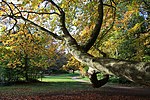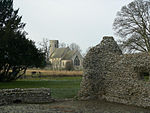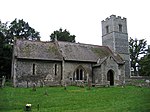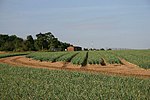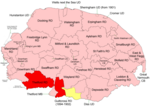Brandon, Suffolk
AC with 0 elementsBrandon, SuffolkCivil parishes in SuffolkForest HeathTowns in Suffolk

Brandon is a town and civil parish in the English county of Suffolk. Brandon is located in the Breckland area of Suffolk, close to the adjoining county of Norfolk. Surrounded by Forestry Commission and agricultural land, it is considered a rural town.
Excerpt from the Wikipedia article Brandon, Suffolk (License: CC BY-SA 3.0, Authors, Images).Brandon, Suffolk
Market Hill, West Suffolk
Geographical coordinates (GPS) Address Website Nearby Places Show on map
Geographical coordinates (GPS)
| Latitude | Longitude |
|---|---|
| N 52.4474 ° | E 0.6242 ° |
Address
Scrivens
Market Hill 9
IP27 0AA West Suffolk
England, United Kingdom
Open on Google Maps

